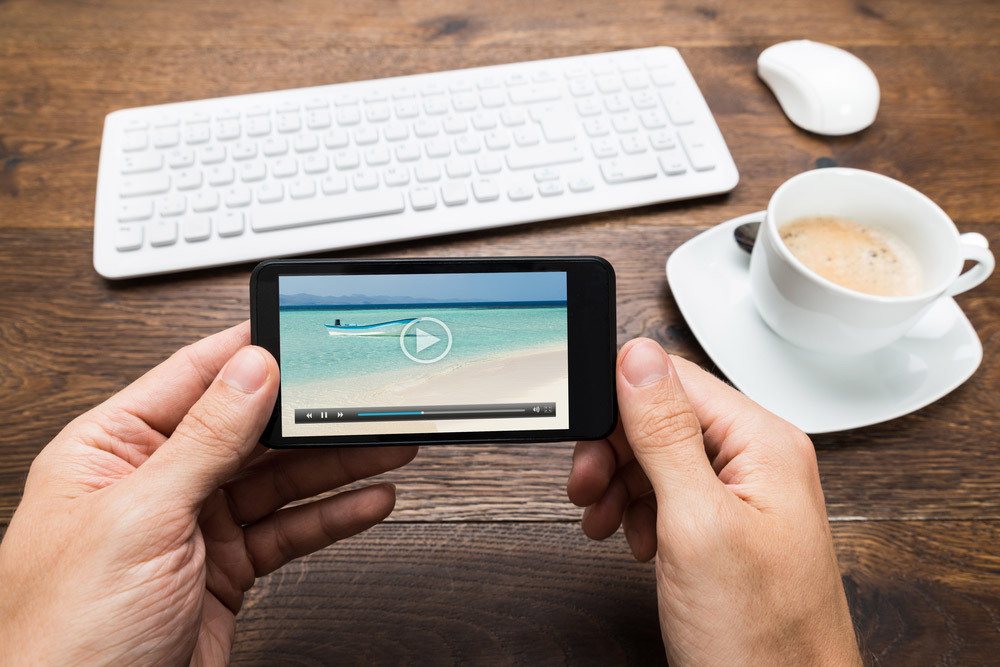Videos To Make eLearning More Engaging
eLearning is all about recall, retention, and implementation. While simulations, interactivities, and game-based learning are effective ways of doing so, the present and the future of eLearning is video.
Videos are now widely used to deliver training online, and there's a good reason for this. By 2022, global video traffic will be 82% of all customer online traffic, up from 73% in 2016. There are good chances that the video-on-demand (VoD) traffic will also double in the coming years. This data does not come as a surprise, considering the time individuals spend watching videos online these days.
According to the cone of learning by Edgar Dale, people generally remember 10% of the things they read, 20% of the things they hear, 30% of the things they see, 50% of the things they hear and see, 70% of the things they write and say, and 90% of the things they do. Visual content covers both the say and hear parts, as well as the do part.
There is nothing more compelling for eLearning than the use of videos, because they compel consumption and also help in improving retention levels. Let's suppose there's a choice of going through a 5000-word lecture transcript versus watching a 5-minute animated video of the central idea of the lecture. In this case, it is easy to say which will be the preferred learning format. Given how compelling and engaging videos are, what types or styles of videos can be used in the eLearning procedure? Let's have a look below.
Types Of Videos For eLearning
1. Software Tutorials
In the corporate world, there are times when you need to teach individuals everything about web applications or software. This is especially the case when you are creating a new training module for newly hired individuals while introducing a brand new app in the market, or when you want to show learners the right way of getting more out of an existing app or program. This is where software tutorials come into effective play.
These are types of videos commonly created through screencasts. Screencasts are useful in teaching learners because they let you demonstrate all the instructions instead of listing them in written form. You can create a screencast by using an app that will record your screen and your microphone to walk the learners through each step of the procedure.
You can use different apps for creating screencasts easily and quickly. There are even apps that can help you record a screencast while also recording your computer's webcam. This way, you will add a personal touch to your screencast.
2. Lecture Videos
It is beneficial to use lecture videos when the presenter or the Subject Matter Expert delivers live training, and some learners cannot attend the same. Lecture videos are one of the best options for presenting lengthy content or storytelling in a more personable manner or format.
The best thing about a lecture video is that it lets you record content and make it easily available to all learners. So, the learners can watch the video on their own time and at convenience. You only need to record the presenter and add the lecture video to your course. You can even combine lecture videos with different interactive components to reinforce the different points of discussion.
3. Demonstrations And How-Tos
Demonstrations and how-to videos fall in the category of explainer videos, which are quite popular on YouTube. Nowadays, people are turning to YouTube to find how-to videos related to their requirements, whether for a small task like ironing a shirt or a major one like a home improvement project. How-to videos are suitable for everything from illustrating the right way of using a new software application, to repairing a machine, to using some equipment. This kind of learning works for everything, from home improvement to online workplace training.
An explainer or how-to video is a simple but highly effective way of teaching a new process or task to individuals who know nothing about it. It is not just easier but also faster to show any task or process through a video instead of writing out each step. Using how-to or demonstration videos in the eLearning process helps learners jump to specific points easily and even rewatch significant steps repeatedly. Further, demonstrating steps in a procedure offers visual context and cues to the instructions and thus helps avoid misunderstandings.
4. Interactive Videos
Most of the video content in the eLearning procedure is passive—the learner watches the video and doesn't do anything else. This is where interactive videos come in. They are different because they involve the learner, often for making a decision or answering a question. Such videos effectively enhance engagement levels and create new learning experiences.
Interactive videos do not just engage the learners but even ensure that the learners do not tune out in the middle of the content. Such videos also let learners evaluate their understanding while watching the videos. You can easily create interactive videos by adding additional information and quiz questions to the videos. These elements will keep learners engaged in the video and even encourage them to pay close attention to what they are consuming.
5. Animated Videos
Using motion graphics or animated videos is one of the best ways of delivering fun and playful content. This will make the eLearning procedure more interesting for the learners—think cartoons, but for eLearning! Animated videos are great to use when you do not possess the ability to record with a live individual or in a specific environment or setting. You have many more options because you can easily animate and illustrate your video.
Animated videos made great eLearning tools during the COVID-19 pandemic when people were quarantined within their homes. Since filming live videos was not an easy option during those times, motion graphic videos became the perfect option for delivering online courses. While animated videos are more affordable to produce, they are highly effective in explaining complicated topics. They provide a wide assortment of options for eLearning course developers to make content that will not just engage the learners and boost their learning experience but also facilitate the learning procedure.
Other Video Types That Can Make eLearning More Engaging
Apart from the above-mentioned five types, there are other types of videos that can make eLearning engaging. They are as follows:
1. Whiteboard Animation Videos
Whiteboard animation videos are types of animations where the text and images appear on-screen. Such videos are perfect for explaining scenarios and for storytelling. Hence, they can be used to make online training relevant to the learners.
Whiteboard videos are a subset of explainer videos allowing presenters to discuss topics or tell stories to enhance the overall experience of the learners. Drawing while narrating a story can make the content more emotional and personal, further holding the learner's attention.
2. Presentation Videos
Presentation videos can take varied forms, but they generally feature the Subject Matter Expert or trainer going through a PowerPoint presentation or other similar tool. Such videos involve screen recording with an inset video of the Subject Matter Expert or trainer.
3. Talking Head Video Or Piece-To-Camera Video
Talking head or piece-to-camera videos are the same as presentation videos, except that they do not feature any presentation. The Subject Matter Expert or trainer directly speaks to the learners to explain a topic or concept instead of going through a presentation. Such videos are specifically suitable and beneficial when the expert or trainer has certain name recognition.
4. Teaser Or Introduction Videos
Teaser or introduction videos are effective in situations where you think it will be advantageous to promote the eLearning program to encourage the team to complete it. Such videos are used on optional courses, or where you want to track individuals with ambition or passion in a specific field. They can take varied forms, but their typical objective is to explain what the learners can expect from the online course.
5. Interview Videos
eLearning trends have made way for the use of different varieties of videos in the process to make it easier and more engaging for learners. So, there's no way that interview videos will take the back seat in this category. Interview videos are also very effective in making eLearning more engaging. The situations where such videos are highly effective include where the content features viewpoints from different employees, partners, or customers, or where a conversational style is considered one of the best ways of getting information across.
Conclusion
Regardless of the video type you want to include in your eLearning course, always pay attention to quality instead of quantity. Bringing a good variety to the eLearning procedure will be helpful to learners. So, work on this instead of increasing the number of videos you produce.








